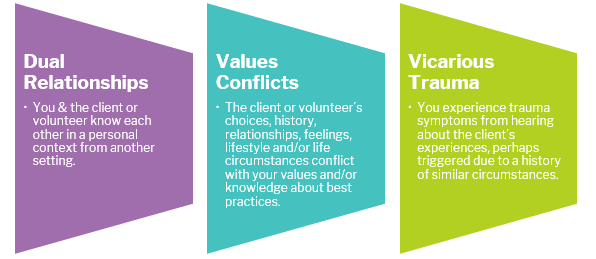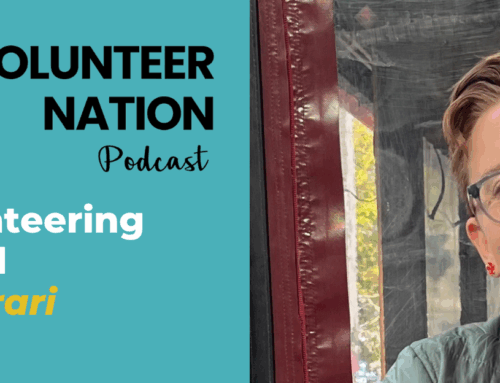 How to Become the Productive, Mindful Nonprofit Leader the World Needs Right Now
How to Become the Productive, Mindful Nonprofit Leader the World Needs Right Now
The world is a hectic place right now, and now more than ever, our communities need you be a nonprofit leader who knows how to maintain a sense of calm, even during times of uncertainty, all while maintaining personal productivity.
It’s no secret that volunteer managers wear many hats. You’re expected to recruit volunteers, track program outcomes, maintain community partnerships, develop leaders, resolve conflict, and more! Did we mention you’re expected to manage these all at the same time? It’s enough to make anyone feel frazzled.
However, it doesn’t have to be this way!
Make a commitment, right now, to keeping yourself safe and sane for the common good of your organization, your volunteers, and your community.
Follow our tips that will help you develop deeper focus, better boundaries, and improved time management skills.
How Nonprofit Leaders Can Maintain Boundaries
There is a great quote by Audre Lorde that you should commit to memory, right now! “self-care is not about self-indulgence, it’s about self-preservation”.
If you don’t remind yourself of this on a regular basis, especially during the time of leading volunteers during a global pandemic, you will burn out.
Nonprofit leaders fall into the category of the helping profession, and there are key responsibilities you should model for your colleagues, volunteers, and communities.
They include:
- Self-awareness and self-monitoring: know your personal warning signs that show you are on the fast track to burn out. Some common ones include: boredom, anger, missing or cancelling appointments, being late or leaving early, loss of enjoyment, impaired sleep, low motivation, and self-medicating.
- Adopting healthy coping strategies: take regular breaks, take vacations (no checking in allowed!), indulge in interests outside of work, exercise regularly, healthy diet, and participating in relaxing activities.
- Career sustaining behaviors: perceiving your work as interesting, continued learning, promoting growth in others, enjoyment of your work, ability to resolve conflicts, and thriving under economic uncertainty.
- Attending to emotional, physical, and spiritual needs: be aware of the high demands of your profession and actively seek out ways you can take care of yourself.
- Self-care and psychological wellness: being honest about the impact of stressors on our functioning and wellness.
- Avoiding the rescuer role: don’t feel the need to “save” everyone! Trust that other team members are fulfilling their responsibilities to the client or volunteer.
- Personal boundary setting: know your limits and be assertive
Professional boundaries are difficult to establish & maintain due to a few different variables.

Not even the most skilled nonprofit leader and volunteer can anticipate every situation in which challenges to professional boundaries may arise.
However, as a leader your goal is to inhabit a zone of helpfulness that is neither under-involved or over-involved. For example, be friendly, not friends.
Here are some other tips to employ:
- Define & communicate appropriate boundaries for your context. Develop policies & volunteer training that reinforces appropriate boundary setting.
- Consistently apply your organization’s policies & procedures for working with volunteers & clients (communications channels, expected response times, social media use, etc.)
- Recognize that transgressing boundaries sets up others for failure by creating unfair expectations of special treatment.
- Partner with colleagues (peers & supervisors) to resolve boundary dilemmas.
- Take breaks away from work environment & guard this time with your life.
- Seek help from a professional to better understand your behavior and evaluate the sustainability of your current role or work environment.
Remember, when you transgress boundaries, no matter how well-intentioned, you set up an uncertain environment that calls trust into question. This also makes you more prone to burnout.
So, setting boundaries is about giving yourself (and others) agency and empowerment.
In other words, boundaries are LOVE!
How You Can Manage Interruptions

In order to have an impact as a nonprofit leader, you will need to learn how to manage the constant interruptions you are faced with. You can start by adopting a new personal mantra: when I say “yes” to one thing, I say “no” to another.
According to research by the software firm Sure Payroll:
- 61% say loud colleagues are the biggest office distraction
- 86% prefer to work alone to hit maximum productivity
- 40% consider impromptu desk-side meetings a major distraction
In order to be successful in achieving all of your goals you must limit your distractions and interruptions.
Here are some tips:
- Set up communications norms
- For example, who to cc:, thank you emails, private time, etc.
- Set up office hours
- Make your calendar public
- Block out private, ‘mono-task’ time & planning days
- Communicate your availability on a dry erase board on your door
- Use software to set & book dates
- Create your space
- Shut your door, book a private conference room, or put up a sign on your cubicle
- Turn off your phone, email & text alerts
- Delegate leadership
- Share repetitive tasks with volunteer teams
- Focus on your personal zone of genius
It’s inevitable, that even with all of these measures in place, you are bound to have that one colleague or volunteer with an “urgent” need that just doesn’t fit into your current work plan.
In that case, if it’s truly not an urgent need, you can say no, and do it with grace!
Here are some ways you can start saying “no” with grace:
- Simply don’t respond at all. This applies to outside solicitations that won’t have a direct impact on your professional relationships!
- Explain that you have a competing commitment. They don’t need details, so use this tactic even if your existing commitment is your weekly time block for writing volunteer thank you notes.
- Explain why you don’t think it’s a wise idea to say “yes”. For example, if I say “yes” then this (negative impact) will happen.
- Be helpful & suggest an alternate course of action, such as, have you tried (action, person, or thing)?
- Be candid about your boundaries and capabilities. Simply state that you can’t take on more than your share at the moment. They will appreciate the honesty.
- Communicate good intentions. Let them know you will get back to them if your schedule changes and you can assist.
- Take a stand. Validate their need for assistance, but don’t give into temptation that would have you completing a task you otherwise shouldn’t be doing.
We tend to suffer from a “harshness bias” in which we believe that people judge us more negatively than they actually do. The truth is that most people won’t think less of you in your say no, and in fact, most people will respect you more, knowing that you are modeling healthy limits that everyone should be following.
How Busy Nonprofit Leaders Can Boost Personal Productivity
Goals are not the same as plans to reach them. You can come up with a full list of goals and an impressive vision for your volunteer program, but that doesn’t replace that hard work of planning to get them done.
That’s why, if you are looking to boost productivity, you need a plan to scale.

There are four steps to follow to set your plan to scale:
1) An Annual Vision: Think of your work in seasons or cycles and plan accordingly. For example, in which months will you focus on outreach, education, and fan building, and in which months will you focus on volunteer recruitment, training, and onboarding? Then, tailor your work tasks around those priorities.
2) Quarterly Big Rocks: If you consider everything equally important or urgent, you’ll likely experience more stress and less success. Every quarter, focus on the 20% of your responsibilities that generate 80% of the results by choosing 3-5 priority goals.
3) Focused Project Plans: At VolunteerPro, we meet every week for a SCRUM style meeting, during which we utilize a lean, incremental framework to help us manage complex work. It also helps us focus on the project at hand and remove any tasks that aren’t relevant.
4) A Monthly Cadence: Once you determine what your project needs are, set your monthly cadence of production: these include blogs, email newsletters, social media posts, program and training development, community outreach, and more. Once you have your cadence down, you can start to mega-batch your tasks, freeing up mental space to focus on results!
By following this method, you will instinctively learn what priorities you should focus on, you’ll experience less stress and more success, and you’ll feel good knowing that you finally have a process for reaching your goals!
We Want to Hear from You!
Let us know what tips you plan on implementing, or if we left something out that works for you!







Leave A Comment